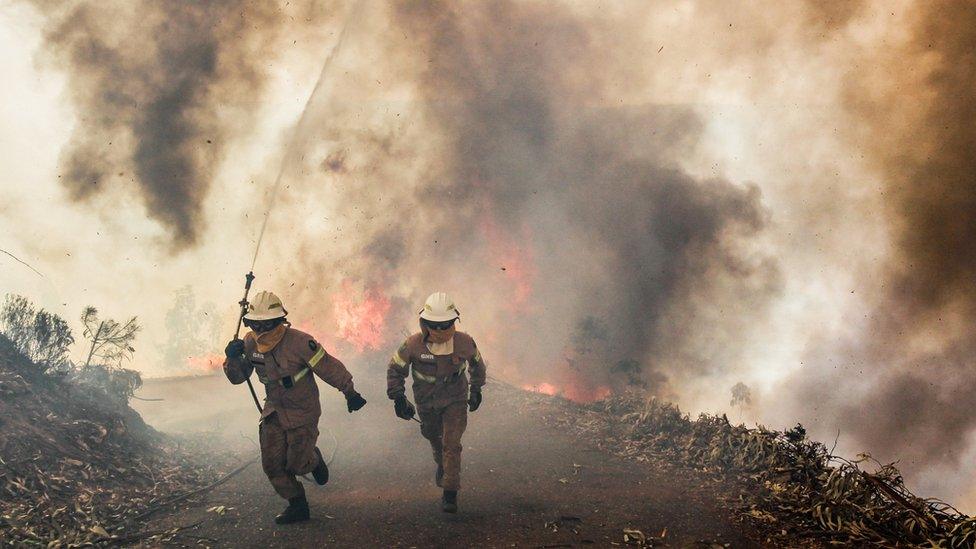Portugal forest fire: 12 survive by hiding in a water tank
- Published
Drone footage shows burnt-out cars in the Pedrógão Grande area
Twelve people survived one of Portugal's deadliest fires by seeking refuge in a water tank after access to their village was cut off by the blaze.
The residents, including a disabled 95-year-old woman, spent more than six hours in the tank as the fire prevented them from being rescued.
"If it wasn't for this, we would all have died," one of the survivors said.
The fires, which police believe were started by lightning, killed 63 people, many of them dying in their cars.
The latest of the victims was identified as a 40-year-old firefighter who died in hospital.
Residents in some areas of central Portugal were still being evacuated as more than 1,000 firefighters tackled the blaze, which continued to rage on several fronts on Monday despite light rain.
Maria do Céu Silva was hailed as a hero after using her house's water tank to rescue the residents of Nodeirinho, next to the IC8 motorway, which was badly hit by the fire.
The idea, Ms Silva said, came while she tried to save her disabled mother.
"My husband told me to put her in the van but she couldn't get in by herself so she told me: 'Let me die on the floor'," she told Correio da Manhã newspaper., external
"With the help of my son we managed to take her here." Her 81-year-old father also survived by hiding in the tank.
The winds were so strong, she said, that roofs of the houses were blown out. "It was like a horror movie."
BBC Weather's Jay Wynne reports on the devastating wildfires in Portugal.

Eyewitness: Fire survivor Gareth Roberts
We found ourselves stranded in a village called Mó Grande, just off of the IC8 motorway; ourselves and others were directed there by an officer from the IC8.
As we drove up the mountain road you could see the flames jumping across from one side of the valley to the other. The accompanying wind threw branches at the car but you couldn't stop, you could feel the heat.
Eventually we reached the small village at a crossroads surrounded by fire. Locals and ourselves were crying, overwhelmed by the heat and speed of the fire. It was dark, so dark, among the flames.
The devastation was indescribable. People, bewildered, remains of homes burning uncontrollably, concrete posts exploding over roads.
Gareth Roberts: 'You could hear the roar of the fire coming... we just sat and waited to die'

Next to the village, 30 bodies were found inside cars, with another 17 next to the vehicles, on the N-236 road, which leads on to the IC8 motorway. The N-236 was being described as the "road of death" in Portuguese media.
A few kilometres north of Nodeirinho, 11 people died in the village of Pobrais. Local reports said a third of the population had lost their lives, many as they tried to escape the fire. A survivor spoke of the roads being blocked and of no-one coming to their aid.
Maria de Fátima Nunes and her husband were driving on the motorway when their car was hit by the fire.
"My husband was burned on the arm," she told SIC Notícias. "I got burned too, on the chest."
Residents watch on as their homes blaze in Pedrogao Grande
"There was fire at the top of the pine trees and they were falling over the cars. The fire was coming from all sides. The cars crashed into each other trying to escape."
The couple who were in the car behind them, she said, did not manage to escape and died. "I shouted for the woman to get out of the car, but she didn't. Her husband did, but died there."
Officials said on Monday that 135 people had been injured by the fires, including more than a dozen firefighters.
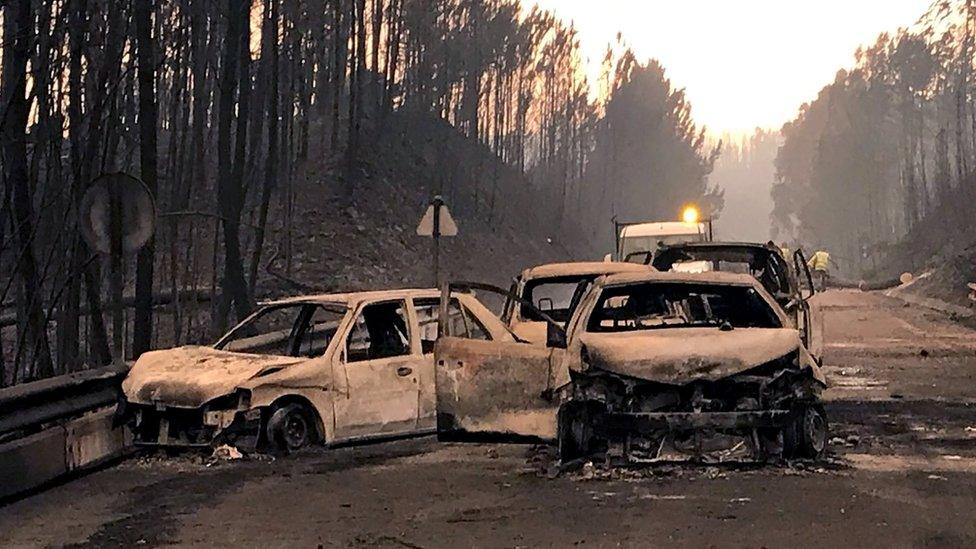
The fire hit the central forested region of Pedrógão Grande
The fires began on Saturday in the Pedrógão Grande region during an intense heatwave and rainless thunderstorms, with temperatures of more than 40C (104F) in some areas.
Meanwhile, outbreaks were reported in two more central regions, Castelo Branco and Coimbra. There was some rain on Monday and temperatures dropped slightly, but the situation was described by civil protection officials as worrying.
Prime Minister António Costa visited some of the affected areas and urged people to follow the evacuation calls.
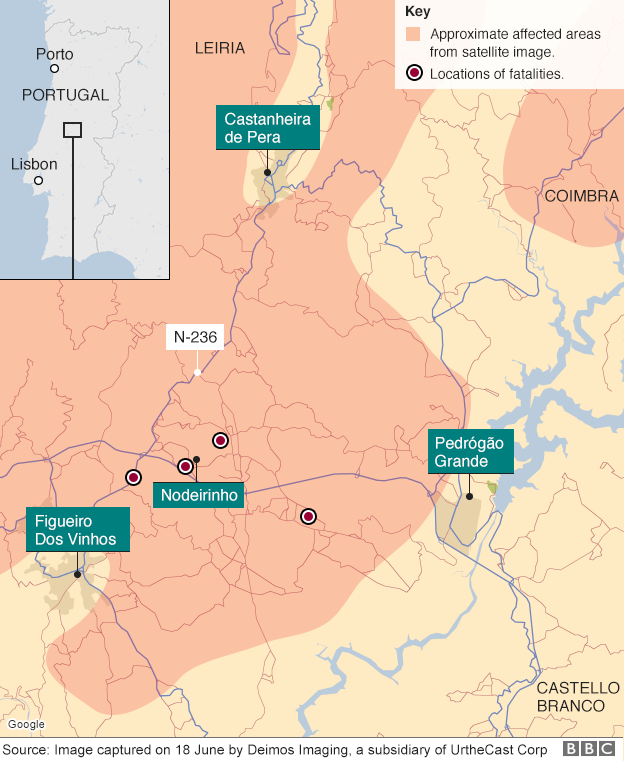
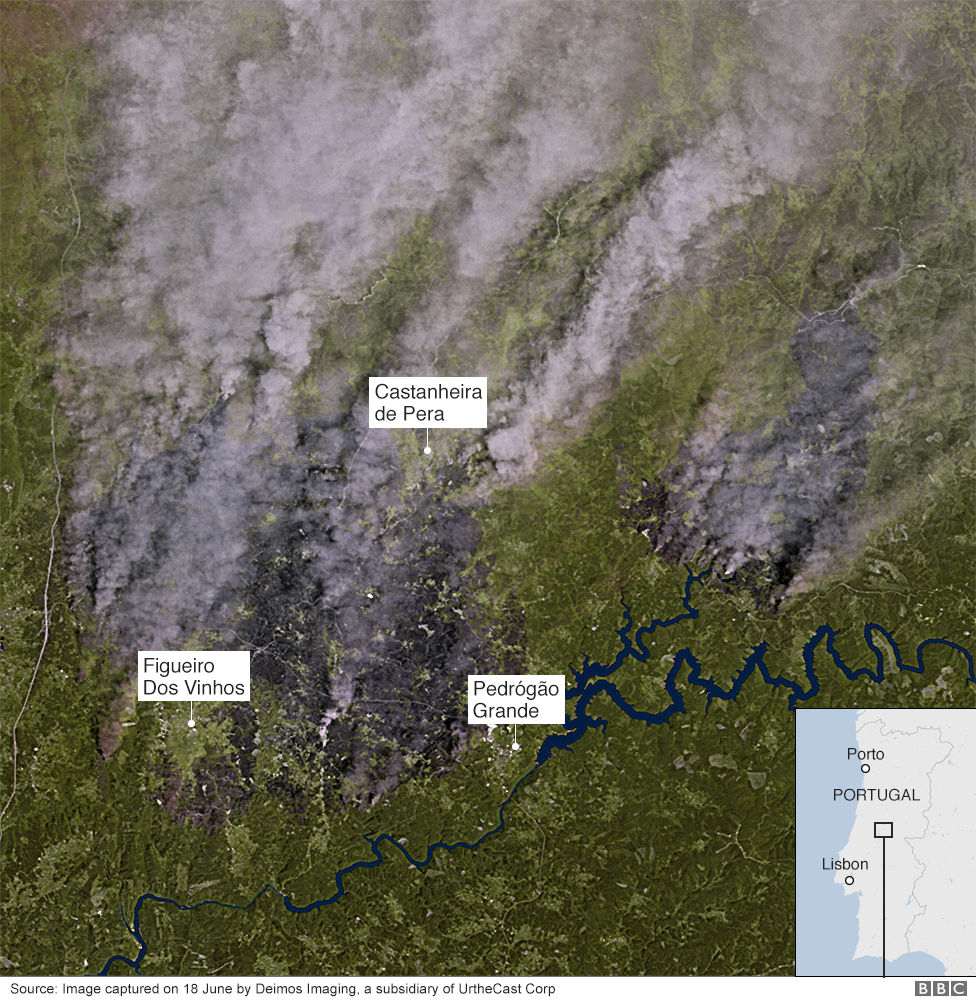
- Attribution
- Published19 June 2017
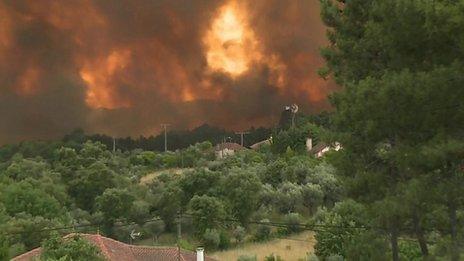
- Published18 June 2017

- Published19 June 2017
- Published18 June 2017
